Abstract
Hydrogen cyanide (HCN) production by Pseudomonas aeruginosa in a synthetic medium is stimulated by the presence of glycine. Methionine enhances this stimulation but will not substitute for glycine as a stimulator of cyanogenesis. Threonine and phenylalanine are effective substitutes for glycine in the stimulation of HCN production. Glycine, threonine, and serine are good radioisotope precursors of HCN, but methionine and phenylalanine are not. Cell extracts of P. aeruginosa convert [14C]threonine to [14C]glycine. H14CN is produced with low dilution of label from either [1-14C]glycine or [2-14C]glycine, indicating a randomization of label either in the primary or secondary metabolism of glycine. When whole cells were fed [1,2-14C]glycine, cyanide and bicarbonate were the only radioactive extracellular products observed.
Full text
PDF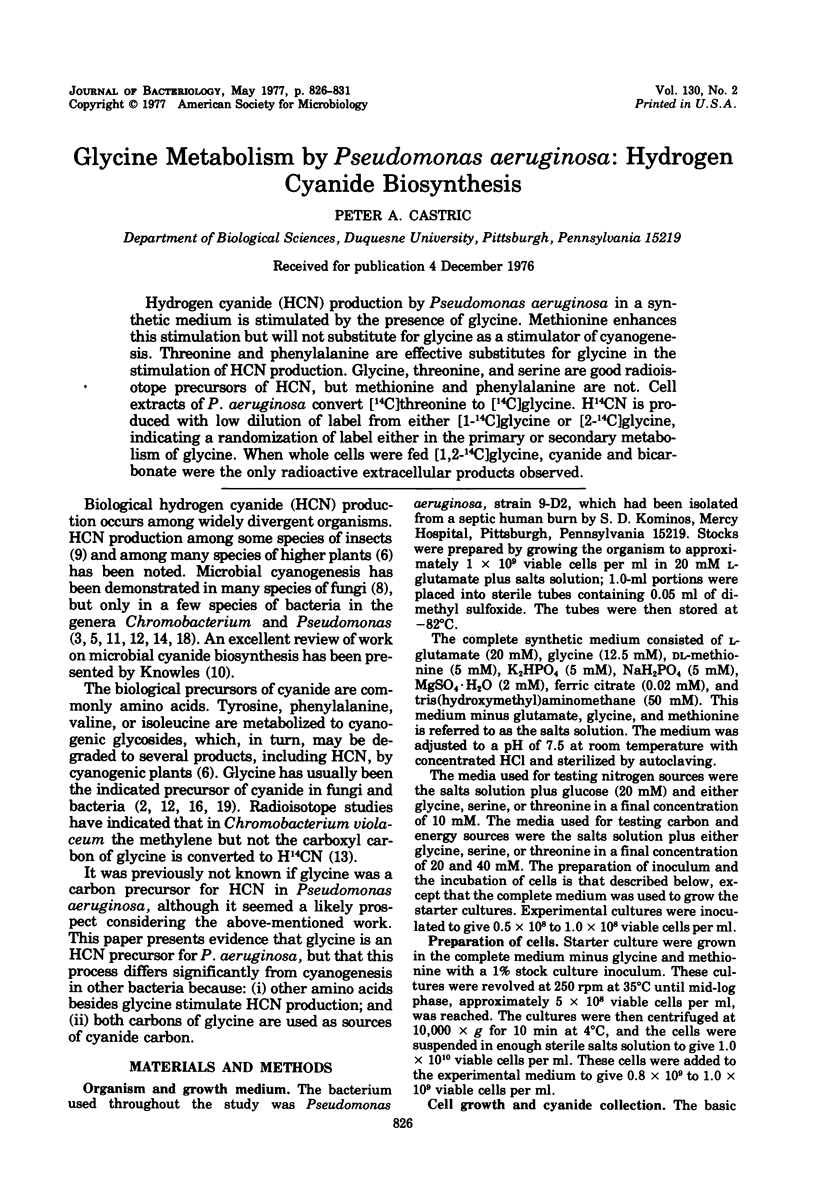
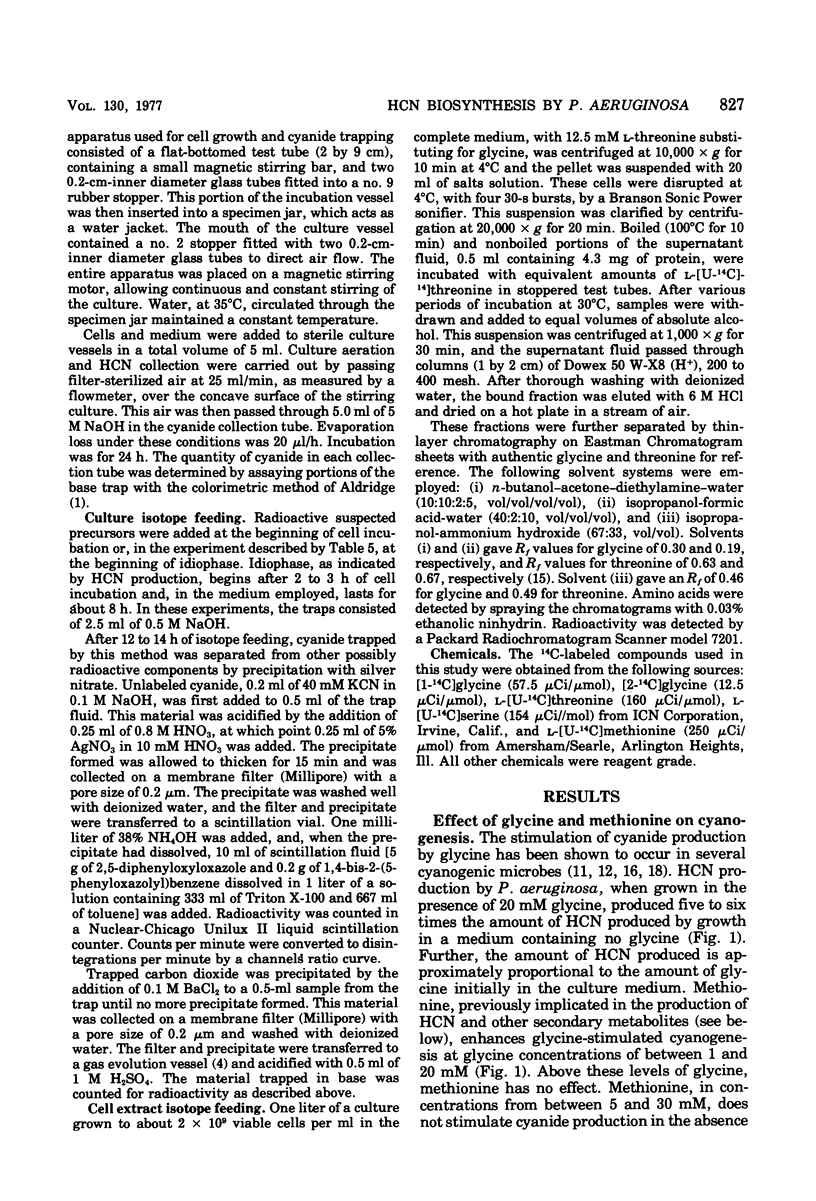
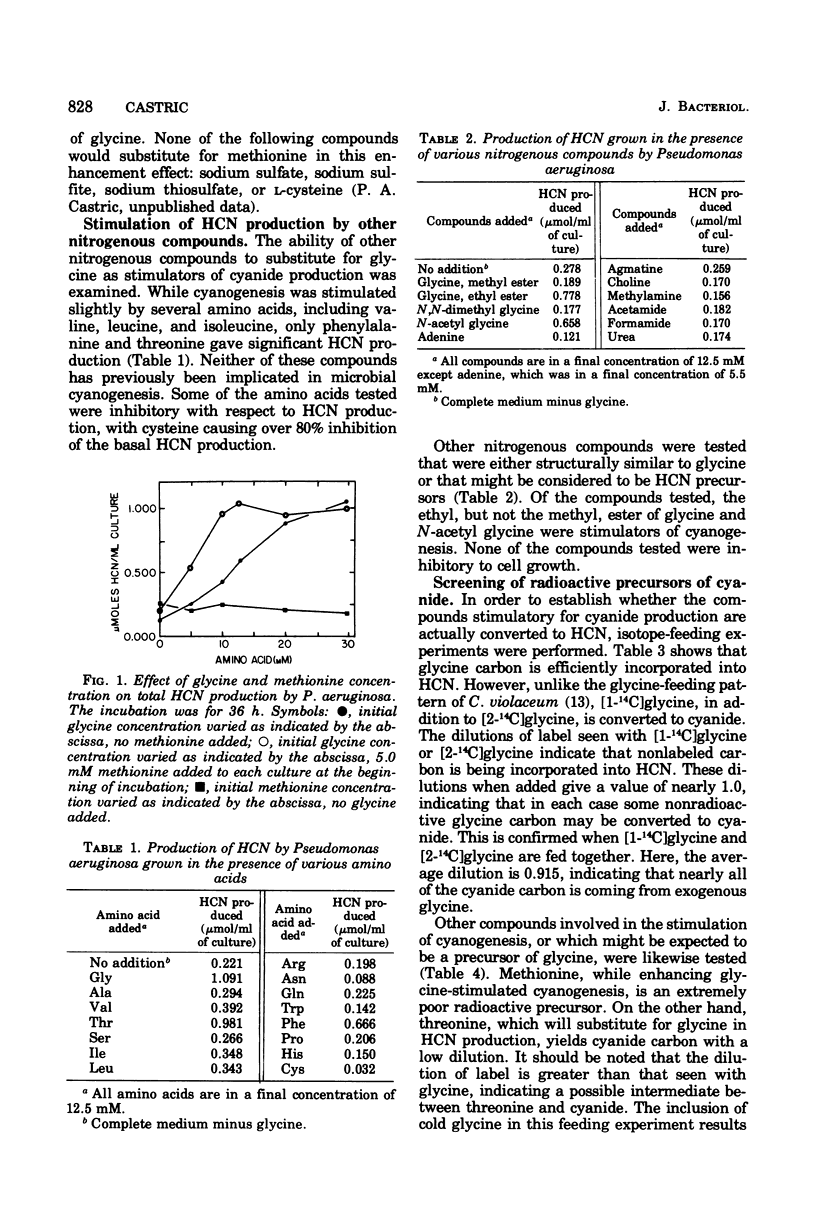
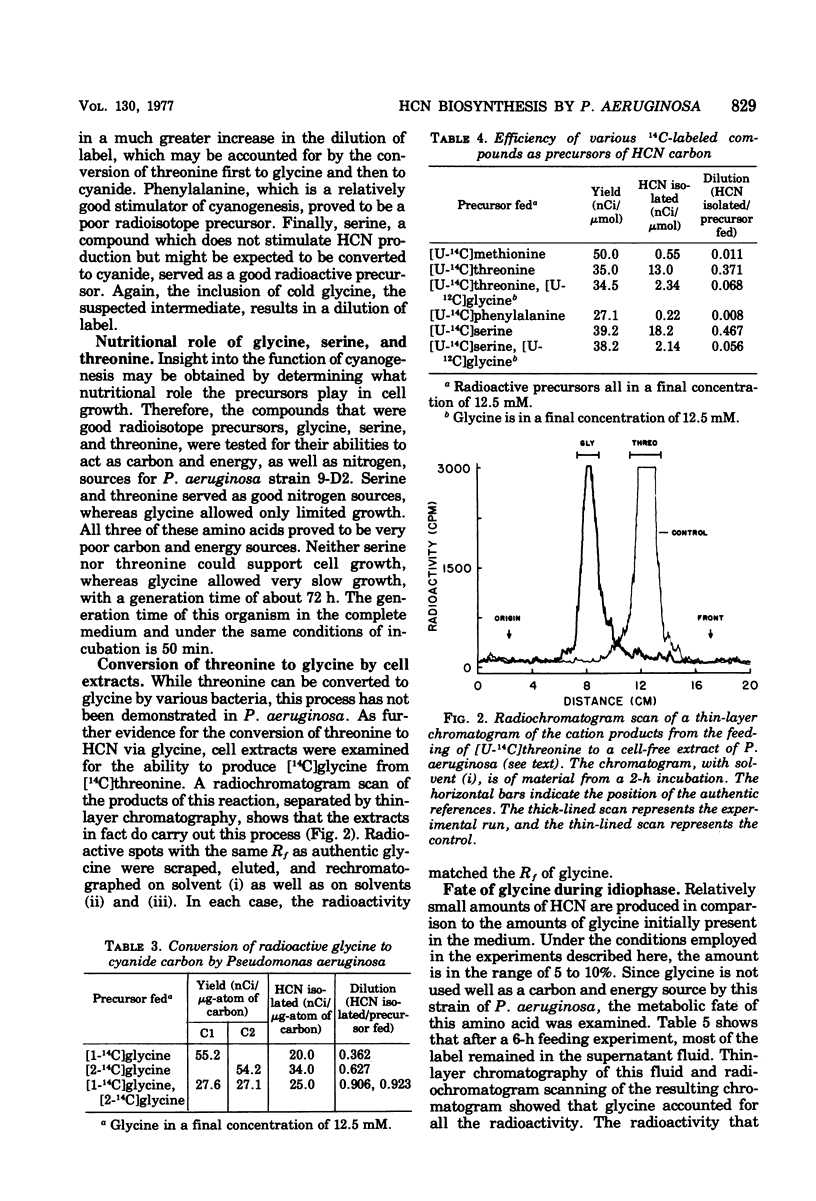
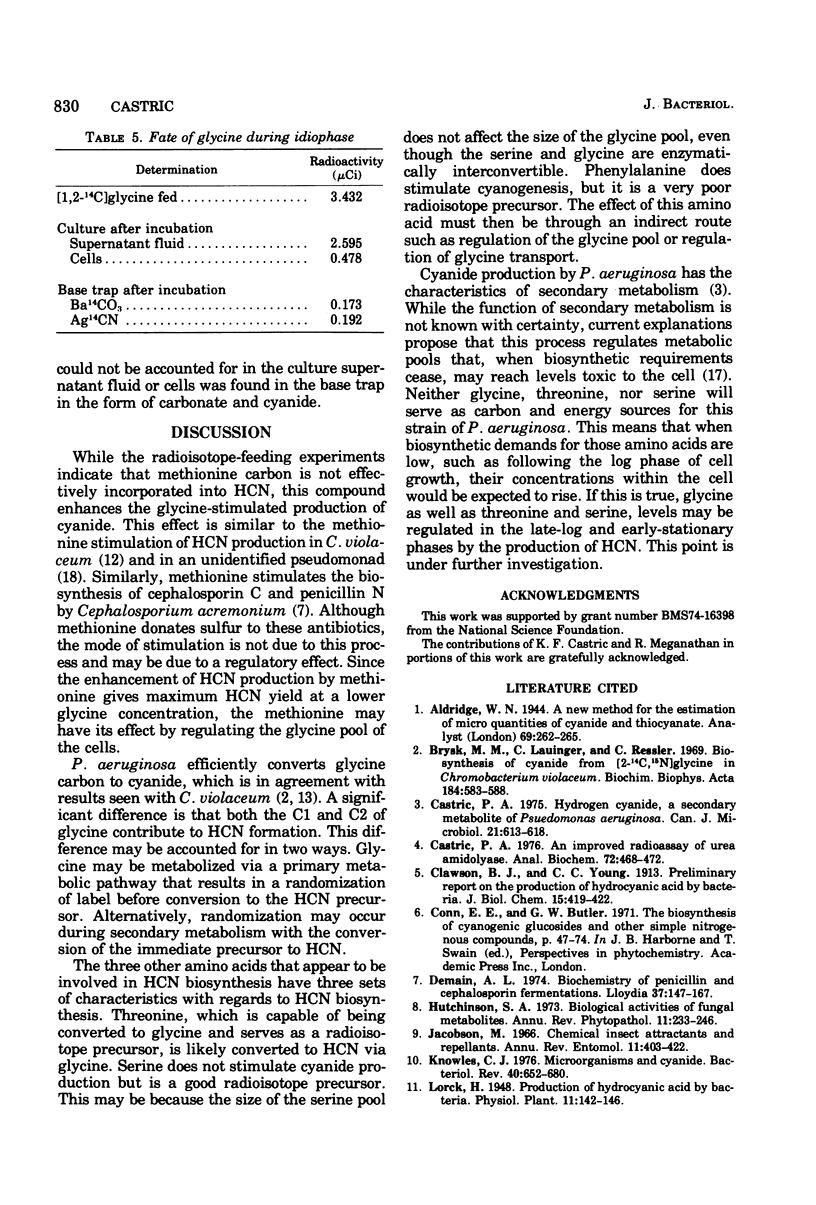
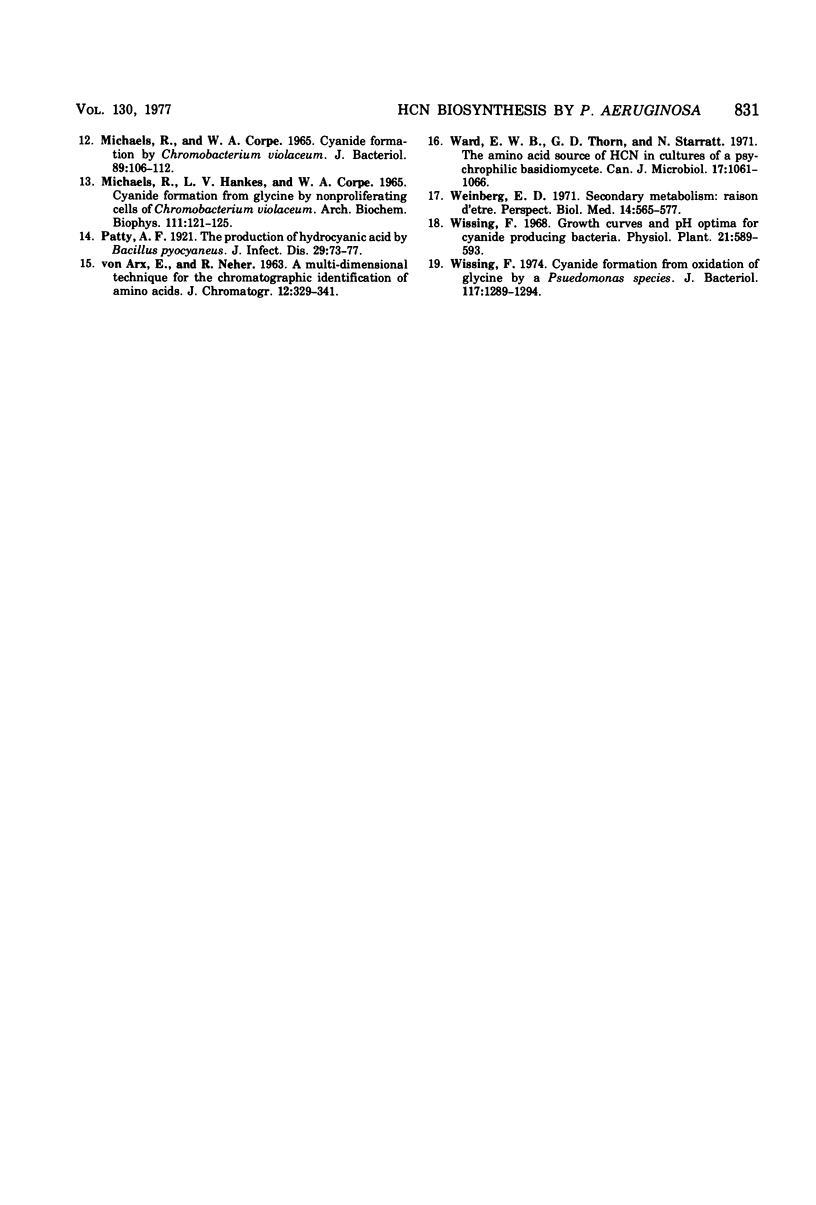
Selected References
These references are in PubMed. This may not be the complete list of references from this article.
- Brysk M. M., Lauinger C., Ressler C. Biosynthesis of cyanide from [2-14C-15N]glycine in Chromobacterium violaceum. Biochim Biophys Acta. 1969 Sep 2;184(3):583–588. doi: 10.1016/0304-4165(69)90272-4. [DOI] [PubMed] [Google Scholar]
- Castric P. A. An improved radioassay of urea amidolyase. Anal Biochem. 1976 May 7;72:468–472. doi: 10.1016/0003-2697(76)90555-8. [DOI] [PubMed] [Google Scholar]
- Castric P. A. Hydrogen cyanide, a secondary metabolite of Pseudomonas aeruginosa. Can J Microbiol. 1975 May;21(5):613–618. doi: 10.1139/m75-088. [DOI] [PubMed] [Google Scholar]
- Demain A. L. Biochemistry of penicillin and cephalosporin fermentations. Lloydia. 1974 Jun;37(2):147–167. [PubMed] [Google Scholar]
- Jacobson M. Chemical insect attractants and repellents. Annu Rev Entomol. 1966;11:403–422. doi: 10.1146/annurev.en.11.010166.002155. [DOI] [PubMed] [Google Scholar]
- Knowles C. J. Microorganisms and cyanide. Bacteriol Rev. 1976 Sep;40(3):652–680. doi: 10.1128/br.40.3.652-680.1976. [DOI] [PMC free article] [PubMed] [Google Scholar]
- MICHAELS R., CORPE W. A. CYANIDE FORMATION BY CHROMOBACTERIUM VIOLACEUM. J Bacteriol. 1965 Jan;89:106–112. doi: 10.1128/jb.89.1.106-112.1965. [DOI] [PMC free article] [PubMed] [Google Scholar]
- Michaels R., Hankes L. V., Corpe W. A. Cyanide formation from glycine by nonproliferating cells of Chromobacterium violaceum. Arch Biochem Biophys. 1965 Jul;111(1):121–125. doi: 10.1016/0003-9861(65)90329-2. [DOI] [PubMed] [Google Scholar]
- VON ARX, NEHER R. EINE MULTIDIMENSIONALE TECHNIK ZUR CHROMATOGRAPHISCHEN IDENTIFIZIERUNG VON AMINOSAEUREN. J Chromatogr. 1963 Nov;12:329–341. doi: 10.1016/s0021-9673(01)83693-1. [DOI] [PubMed] [Google Scholar]
- Ward E. W., Thorn G. D., Starratt A. N. The amino acid source of HCN in cultures of a psychrophilic basidiomycete. Can J Microbiol. 1971 Aug;17(8):1061–1066. doi: 10.1139/m71-168. [DOI] [PubMed] [Google Scholar]
- Weinberg E. D. Secondary metabolism: raison d'être. Perspect Biol Med. 1971;14(4):565–577. doi: 10.1353/pbm.1971.0033. [DOI] [PubMed] [Google Scholar]
- Wissing F. Cyanide formation from oxidation of glycine of Pseudomonas species. J Bacteriol. 1974 Mar;117(3):1289–1294. doi: 10.1128/jb.117.3.1289-1294.1974. [DOI] [PMC free article] [PubMed] [Google Scholar]


